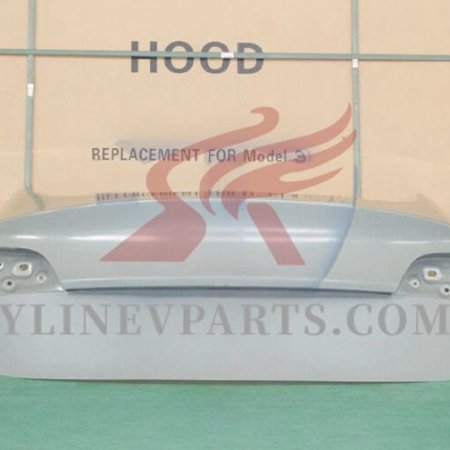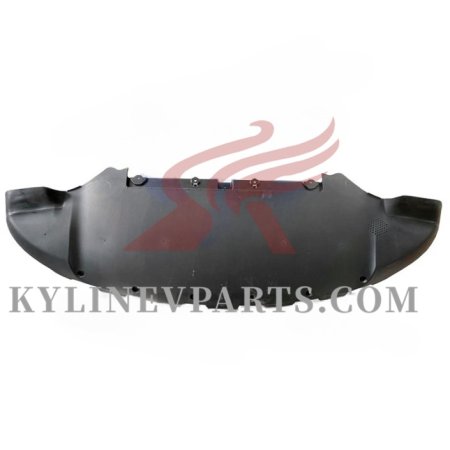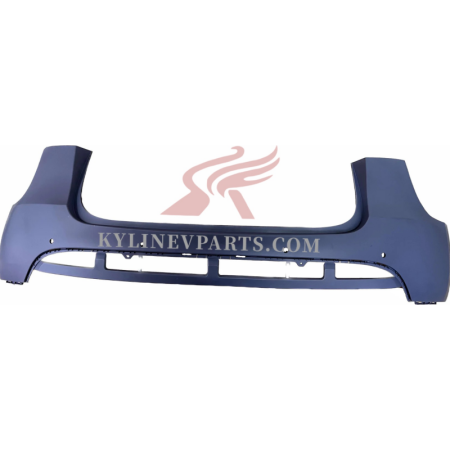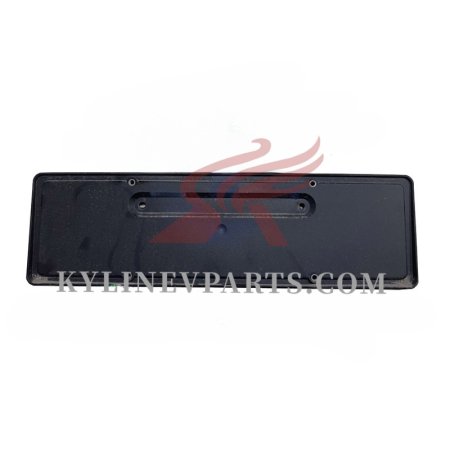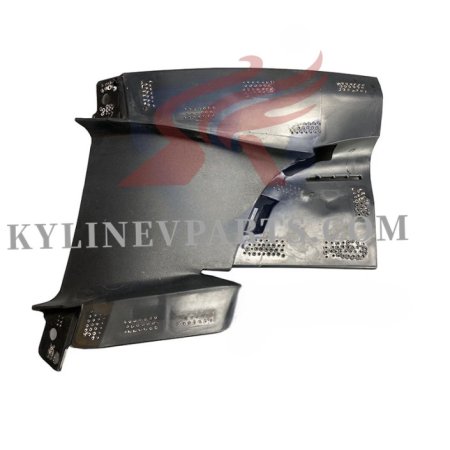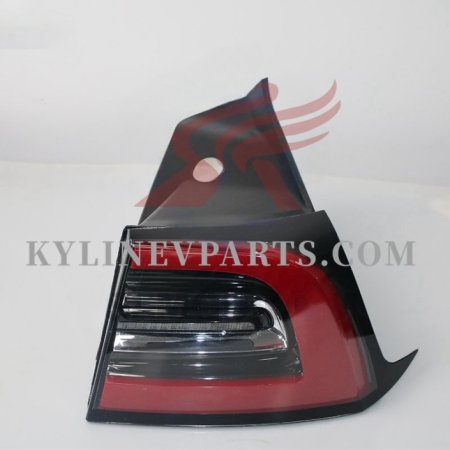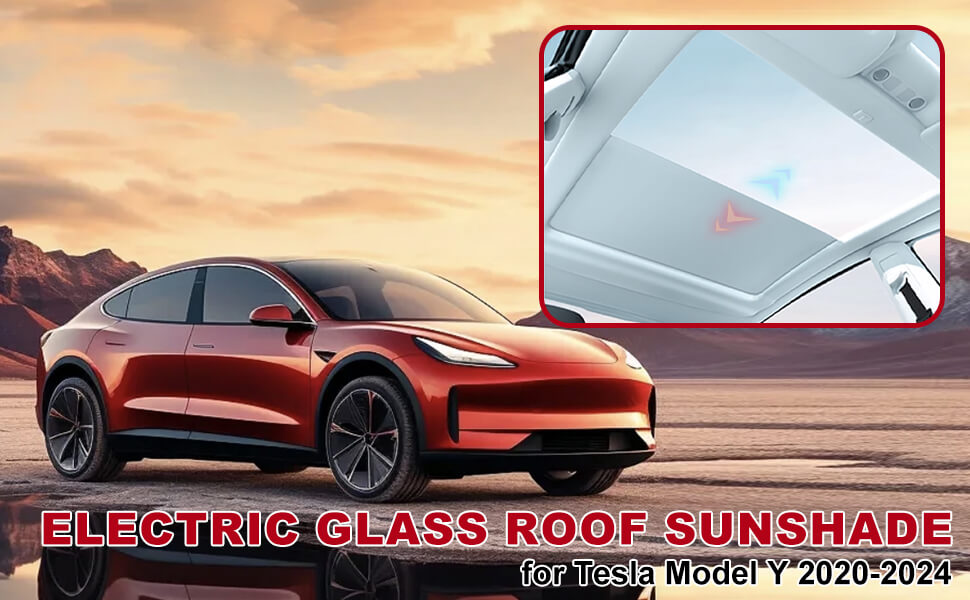Introduction
Owning a Tesla is a dream for many—sleek design, cutting-edge technology, and a sustainable future all rolled into one. However, one concern often lingers: Are Tesla parts expensive? The answer isn’t simple, but yes, they can be. While Tesla vehicles boast impressive performance and efficiency, the cost of maintaining them can be a shock to the wallet. But before you start worrying, it’s essential to understand the key factors driving these high costs.
The first reason behind the premium price of Tesla parts is the proprietary technology Tesla uses. From the electric powertrain to the advanced battery systems, many of Tesla’s components are unique to the brand. This means that parts are not only specialized but are often harder to find, which drives prices up. Add to this the direct sales model Tesla employs, cutting out the middleman—traditional dealerships—and you see a different pricing structure, one that comes with its own set of pros and cons.
But don’t despair! There are ways to manage these costs. In this article, we’ll dive deep into the factors that contribute to the high cost of Tesla parts and provide you with insider tips on how to save money on maintenance and repairs. Whether you’re on the brink of purchasing your first Tesla or are a seasoned owner, understanding these financial factors is crucial for navigating the world of Tesla ownership without breaking the bank.
So, if you’re ready to learn more about why Tesla parts are pricey and how to prepare for those costs, keep reading for actionable insights. Let’s uncover what makes owning a Tesla unique—and how you can manage those costs effectively.
1. What Makes Tesla Parts More Expensive Than Other Car Brands?
When you compare Tesla parts to those of traditional vehicles, the price gap is hard to ignore. It’s a shock to many new Tesla owners or those considering a purchase—why are Tesla parts so much more expensive than those for other cars? The answer isn’t a simple one, but rather a combination of several key factors. From cutting-edge technology to a business model that’s radically different from the norm, there’s a lot that drives these premium prices.
1.1 Proprietary Technology and Innovation
Tesla vehicles are known for pushing the boundaries of automotive technology, and this innovation runs deep into every part of the car. From the electric powertrain to the high-tech sensors enabling semi-autonomous driving, each component is designed with precision and cutting-edge functionality. However, all of this advanced technology comes at a price—and it’s a price that can be steep, particularly when it comes to the replacement or repair of specialized parts. Let’s break down the key components that contribute to the high cost of Tesla parts and repairs.
Battery Packs
Arguably the heart of any electric vehicle, Tesla’s battery packs are a marvel of engineering. But don’t let their sleek design fool you—these are incredibly sophisticated systems that require custom-built components for each model. Tesla’s battery technology is far beyond what’s found in traditional gas-powered vehicles. Not only do these battery packs support the electric drivetrain, but they also play a critical role in maintaining the vehicle’s range and overall performance.
When it comes to replacement or repair, the complexity is immense. Unlike traditional vehicles, which can often rely on off-the-shelf battery components, Tesla’s batteries are intricately designed to fit specific models. The process of replacing or repairing these batteries is highly specific, requiring both expert knowledge and the right parts. Because of this, the labor involved tends to be more time-consuming and expensive, pushing up repair costs considerably.
Autopilot and Full-Self Driving Sensors
Tesla’s Autopilot system, which enables semi-autonomous driving, is another reason why parts and maintenance can be costly. This system relies on a network of cameras, radar sensors, and advanced computing power—all designed in-house by Tesla. While many vehicles on the road today have some form of driver-assistance technology, Tesla’s system is one of the most sophisticated. Its semi-autonomous capabilities rely on precise, high-end sensors that allow the car to detect its surroundings and make decisions in real time.
However, as you might imagine, proprietary sensors like these don’t come cheap. The cost to replace or repair these sensors can be quite high, particularly since they are exclusive to Tesla and often require specialized knowledge to install. Furthermore, after a repair or replacement, software recalibrations are often needed, which can add additional time and cost to the repair process.
1.2 Direct-to-Consumer Sales Model
One of the main reasons Tesla parts are often more expensive than those from traditional car brands is the company’s direct sales model. Unlike conventional automakers, who rely on a network of dealerships and third-party suppliers, Tesla bypasses the middleman by selling both vehicles and parts directly to consumers. While this model offers several benefits—like a more streamlined customer experience—it also has its downsides, particularly when it comes to pricing. By cutting out dealerships, Tesla is in full control of its pricing, and with little external competition, parts costs tend to remain on the higher side.
Fewer Middlemen, Higher Costs
In a traditional dealership setup, parts suppliers compete with one another for the business of car manufacturers. This competition often drives prices down, benefiting consumers with lower-cost parts and repairs. Tesla, however, eliminates this competition altogether. Without third-party dealerships vying for a piece of the action, Tesla sets its own prices for both vehicles and parts, and these prices are typically fixed.
Additionally, the lack of a traditional dealership network means there are fewer opportunities for price negotiations when it comes to parts and repairs. This lack of flexibility results in higher costs for consumers. While Tesla’s approach may offer convenience and consistency, it also means owners are more likely to pay a premium for repairs and parts, with less room to shop around for a better deal.
Tesla Service Centers vs. Independent Shops
Another key difference lies in the repair process. Traditional automakers rely on a network of authorized dealerships and independent repair shops, which can lead to more cost variability. Some independent shops might offer competitive pricing on parts and labor, giving consumers more flexibility in managing repair costs. Tesla’s repair ecosystem, on the other hand, is much more centralized. The majority of repairs and parts replacements are handled through Tesla Service Centers, which are the only places authorized to perform certain repairs due to the proprietary nature of Tesla’s technology.
While this centralization ensures that repairs are done according to Tesla’s stringent standards, it also means higher, fixed prices for parts and labor. Service Centers typically charge more than independent auto shops, as they have a monopoly on Tesla-specific parts and repairs. For many owners, this can mean significantly higher bills for routine maintenance and unexpected repairs.
1.3 Limited Third-Party Parts Availability
Unlike many traditional car brands that open the door for third-party suppliers to produce compatible parts, Tesla takes a different route. Tesla restricts its parts to authorized dealers and service centers, limiting the availability of alternatives in the market. This lack of competition drives up the prices of Tesla parts, leaving owners with fewer options—and a heftier price tag—when a replacement is needed.
OEM vs. Aftermarket Parts
For most car owners, choosing aftermarket parts is a common strategy to save on repair costs. These parts, typically manufactured by third-party companies, are usually more affordable than the original equipment manufacturer (OEM) parts provided by the automaker. Aftermarket options can often offer a similar level of functionality but at a fraction of the price.
However, Tesla’s approach is different. The company is highly protective of its proprietary designs and technology, which means it doesn’t offer the same breadth of aftermarket parts as many other car manufacturers. When a part breaks or needs replacing, Tesla owners are often left with little choice but to go with OEM parts, which are considerably more expensive. There simply aren’t as many affordable alternatives in the market.
Software Restrictions
But it’s not just about the physical components. Tesla vehicles are integrated with complex software systems that work in tandem with the hardware. This creates another barrier to cheaper repair options. Even if a third-party supplier manages to produce a part that’s technically compatible with a Tesla vehicle, it may not work properly unless it’s calibrated and integrated with Tesla’s proprietary software. This means that, even with third-party parts, owners still face the necessity of returning to Tesla’s service centers for software updates or recalibration, which can add additional costs to the repair bill.
1.4 High Research & Development (R&D) Costs
Tesla’s commitment to innovation runs deep, and it’s one of the key reasons why parts for their vehicles come with a premium price tag. The company invests heavily in research and development (R&D), pouring significant resources into improving not only the performance and technology of their vehicles but also their sustainability. While these investments are integral to Tesla’s growth and success, they also contribute to the higher costs associated with Tesla’s parts.
Continuous Innovation
Tesla doesn’t just follow the trends in the automotive industry—it’s constantly pushing the envelope. Whether it’s advancements in autonomous driving technology or cutting-edge developments in battery efficiency, Tesla is always looking to leap ahead. In the process, the company designs and manufactures highly specialized parts that are unlike anything on the market. These parts don’t come cheap. Each new component requires extensive R&D to ensure it meets the brand’s high standards of performance and safety. The cost of that innovation is embedded in the price of Tesla parts, which, as a result, tend to be more expensive than those from traditional automakers. So when you’re buying a Tesla part, you’re not just paying for the material—you’re also contributing to the ongoing effort to improve the technology itself.
Long-Term Sustainability
Tesla’s focus on sustainability plays another critical role in the higher costs of its parts. Unlike many traditional vehicles, which rely on conventional powertrains and systems, Tesla’s electric vehicles are built with long-term energy efficiency and sustainability in mind. This is especially evident in its battery systems and powertrains—parts that are designed to last longer, perform better, and have a lower environmental impact. But these goals come with a price. The materials, technologies, and processes used to create these advanced, durable components are more costly than those typically used in traditional combustion vehicles. The higher production costs for these sophisticated, sustainable parts are passed down to the consumer, making replacement and repair more expensive.
1.5 Global Supply Chain Challenges
Tesla, like every automaker, isn’t immune to the unpredictable forces of the global supply chain. However, due to the company’s heavy reliance on high-quality, specialized materials—such as rare earth metals for batteries and premium materials for electric motors—supply chain disruptions can have an outsized impact on the cost of Tesla parts.
Raw Material Shortages
When the world experiences shortages of critical raw materials, Tesla feels the pinch more than most. Take lithium, for example—a core component in Tesla’s battery technology. As the demand for electric vehicles soars, lithium has become a precious commodity, and prices can spike when supply tightens. Similarly, materials like silicon, which are essential for the semiconductors powering everything from the vehicle’s onboard computer systems to its charging infrastructure, are also subject to fluctuations. Tesla’s commitment to staying at the forefront of the electric vehicle (EV) market means that they must secure these specialized materials—often paying a premium for them. The result? The cost of parts inevitably rises, particularly when the supply of these materials becomes scarce.
Supply Chain Delays
But it’s not just raw materials that can disrupt Tesla’s production and pricing. Supply chain delays, caused by factors like natural disasters, geopolitical events, or even global pandemics, can affect Tesla’s ability to source the necessary materials in a timely manner. These delays—often beyond Tesla’s control—can lead to a bottleneck in production. When the flow of materials is interrupted, the company may face increased costs for the parts needed to keep vehicles running smoothly. Replacement parts and repair services then become more expensive as the cost of procurement rises, further escalating prices for consumers.
2. How Can I Save Money on Tesla Parts and Maintenance?
Owning a Tesla is a rewarding experience, from the sleek design to the cutting-edge technology that powers each model. However, one concern that many owners face is the cost of parts and maintenance. Given the premium nature of Tesla vehicles, the price of some parts and repairs can be eye-watering. But fear not—there are ways to save money on Tesla maintenance without compromising the performance or longevity of your vehicle. By being proactive and informed, you can manage these costs more effectively. Here are a few practical tips to help you keep your Tesla in top shape, all while protecting your wallet.
2.1 Stick to Regular Maintenance Schedules
One of the most effective ways to avoid hefty repair bills is by staying proactive with your vehicle’s regular maintenance schedule. Teslas, unlike many traditional vehicles, don’t require the same level of upkeep—but that doesn’t mean maintenance is optional. In fact, Tesla recommends periodic check-ups to keep your car running efficiently and to catch any potential issues before they escalate into costly problems.
Scheduled Maintenance: A Proactive Approach
While Teslas are designed with longevity and minimal upkeep in mind, they still require regular checks to ensure all systems are functioning properly. Tesla’s electric motors don’t need oil changes, and the brake pads typically last much longer due to the regenerative braking system, which captures energy during braking and reduces wear. Still, certain maintenance tasks are crucial:
- Tire Pressure & Rotation: Keeping your tire pressure at optimal levels and rotating your tires regularly prevents uneven wear and extends tire life.
- Battery Inspections: Teslas rely heavily on their battery packs for performance and range. Regular checks can help identify issues early on, ensuring that your battery remains in good shape.
- Coolant Checks: The coolant system in your Tesla helps regulate the temperature for both the battery and the motor, so periodic checks are essential.
These simple tasks, while often overlooked, help ensure that your Tesla stays in peak condition without the need for major repairs.
Software Updates: The Unsung Hero
One of the unique features of owning a Tesla is its ability to receive over-the-air software updates. Unlike traditional vehicles, which require manual visits to the service center for most fixes, Tesla’s system allows for seamless updates that improve everything from vehicle performance to adding new features.
Regular software updates are crucial for the following reasons:
- Enhance Performance: Tesla constantly refines its algorithms, improving everything from range efficiency to the driving experience.
- Fix Bugs: Issues with the car’s systems or minor bugs can often be resolved through a simple software update, saving you a trip to the service center.
- Add New Features: Over time, Tesla introduces new features, some of which can even enhance vehicle safety or autopilot functionality. Keeping your car updated ensures you’re always running the latest version.
By ensuring your car is always up-to-date, you can avoid unnecessary service visits that might otherwise lead to expensive fixes or missed performance upgrades. The beauty of a Tesla is that much of its maintenance can be done remotely, making it easier and more convenient than ever to stay ahead of any potential issues.
2.2 Use Tesla’s Warranty and Service Plans
Tesla provides several coverage options that can help mitigate the costs of maintenance over the long haul, making it easier to manage repairs and replacements without breaking the bank. Whether you’re a new owner or planning to keep your Tesla for many years, understanding the details of your warranty and service plans can be a game-changer when it comes to reducing unexpected expenses.
Tesla Warranty: A Strong Foundation for Peace of Mind
Tesla’s standard warranty covers your vehicle for 4 years or 50,000 miles, whichever comes first. This comprehensive coverage includes most of the vehicle’s major components, such as the electric motor, drive unit, and other essential systems. However, what really sets Tesla apart is its separate battery and drive unit warranty, which extends for 8 years, offering extended protection for these critical parts.
Understanding what’s covered under your warranty can help you avoid costly repairs that might otherwise fall outside of coverage. For instance, issues with the battery or drive unit—two of the most expensive components of your vehicle—are often fully covered under the extended 8-year warranty, ensuring that you’re not left with an unexpected bill for these crucial parts.
Extended Service Plans: Ensuring Long-Term Protection
If you’re planning on keeping your Tesla for the long term, opting for an extended service plan can be an excellent investment. These plans provide additional coverage for critical components, allowing you to manage the cost of repairs or replacements as your vehicle ages.
An extended service plan can cover a range of services, from battery replacements to drive unit repairs, both of which are significant expenses as your Tesla accrues mileage. It’s especially useful for those who plan to keep their vehicle beyond the standard warranty period and want to ensure peace of mind without the looming fear of hefty repair bills.
2.3 Consider Aftermarket Parts
While Tesla has a reputation for keeping third-party parts under tight control, there are still ways to save money on repairs and replacements by using aftermarket components. These parts are often more affordable than their original equipment manufacturer (OEM) counterparts and, depending on the source, can offer comparable reliability. Here’s a closer look at how you can use aftermarket parts without sacrificing quality or performance.
Aftermarket Options for Non-Critical Parts
For certain non-essential components, opting for aftermarket parts can be a smart way to reduce costs. Items like floor mats, lighting, or decorative trim pieces are examples of parts where quality aftermarket alternatives are plentiful. Since these parts don’t directly affect the car’s performance, going for a well-reviewed aftermarket part can save you money without compromising functionality. However, it’s crucial to choose reputable suppliers who specialize in Tesla-compatible products. Researching and reading customer reviews can go a long way in ensuring you’re getting a part that’s built to last.
Independent Mechanics
Another way to lower repair costs is to visit independent auto shops, particularly those with experience in electric vehicles (EVs). These shops often charge lower labor rates than Tesla’s official service centers, which can make a big difference when you’re faced with expensive repairs. The key here is to find a shop that is well-versed in Tesla’s unique electrical systems and can handle repairs without inadvertently voiding your warranty. Always check if the shop has trained technicians who understand Tesla’s specialized components and software, as improper repairs can lead to bigger issues down the road.
2.4 Perform Simple Maintenance Yourself
Certain aspects of Tesla maintenance can be tackled right at home, helping you skip the expensive labor costs that come with service center visits. While major repairs should always be left to professionals, there are plenty of simple tasks that Tesla owners can do themselves to keep expenses low and maintain the vehicle’s performance.
Tire Rotation and Pressure Checks
Regular tire rotation and monitoring tire pressure are not only easy but also essential. These simple tasks help ensure your tires wear evenly, which can prolong their lifespan. Tesla’s in-app guidance makes it even easier, offering real-time pressure readings and reminders to keep things in check. It’s a small task that adds up over time in savings.
Cleaning and Detailing
Keeping your Tesla clean isn’t just about aesthetics; it’s a vital part of maintenance. Regularly washing the exterior can help prevent dirt and grime from damaging the paint. Likewise, ensuring the cabin air filters are clean and the windshield wipers are in good shape can save you from having to replace them prematurely. Plus, taking care of the interior—vacuuming and wiping down surfaces—can reduce wear and tear. A clean car is not only better for resale value, but it also enhances your driving experience, keeping the vehicle in peak condition.
2.5 Monitor Your Driving Habits
Your driving habits can make or break the longevity of your Tesla, especially when it comes to critical components like the battery, tires, and braking system. The way you drive directly influences the wear and tear on these parts, and adjusting your habits can help keep your vehicle running smoothly—and save you money down the line.
Efficient Driving
While Teslas are known for their exhilarating acceleration, frequent heavy footedness can put unnecessary strain on your car’s electric motor and braking system. It’s tempting to push the pedal to the metal, but opting for smoother, more controlled acceleration can significantly extend the life of your vehicle’s most important components. A steady, gradual approach not only reduces wear but also improves energy efficiency. Think of it like giving your Tesla a little more TLC, making it last longer without sacrificing the driving experience.
Regenerative Braking
Tesla’s regenerative braking system is a game changer. This clever tech recovers energy during braking, funneling it back into the battery to recharge. But its benefits don’t stop there—regenerative braking also reduces wear on traditional brake components, which means fewer trips to the service center for costly brake repairs. So, make it a habit to use regenerative braking to its full potential. The more you rely on it, the less you’ll need to replace brake pads and other parts, ultimately saving you time and money. Plus, it’s an eco-friendly way to maximize efficiency.
2.6 Shop Around for Parts and Repairs
Although Tesla’s service centers are undeniably convenient, they can often carry a hefty price tag—especially when your warranty has expired. If you’re in need of parts or repairs outside the coverage period, it’s worth exploring other options to help keep costs down. Here’s how you can be proactive about reducing your expenses:
Compare Service Centers and Independent Shops
When it comes to maintenance, some independent shops may offer lower prices for labor and parts, especially if they have a specific focus on electric vehicles. While Tesla’s service centers are tailored to handle all your needs with expert precision, independent shops can sometimes be just as capable, with a more flexible pricing structure. The key is to ensure the shop has experience working on Teslas—look for reviews and customer testimonials to confirm their expertise.
Look for Discounts or Promotions
Tesla, like many other companies, occasionally runs promotions or offers discounts on parts and services. Keep an eye on their official website or reach out to your local service center to inquire about any ongoing deals. These offers can significantly help reduce the overall cost of maintenance or repairs, especially for major components. It’s worth checking periodically or signing up for updates so you never miss an opportunity to save.
By comparing different service options and staying alert for promotions, you can take control of your Tesla’s maintenance costs without sacrificing the quality of care your vehicle deserves.
3. Are There Affordable Alternatives for Tesla Parts?
When it comes to owning a Tesla, one of the most common concerns is the cost of maintenance and repairs. With the advanced technology and premium build quality that Tesla vehicles are known for, replacing parts can often feel like a hefty expense. OEM (Original Equipment Manufacturer) parts, while ensuring the best compatibility and performance, come with a price tag that many owners find challenging to stomach. The good news is, there are alternative solutions that can help keep costs down without compromising your car’s integrity.
In this section, we’ll dive into the world of affordable alternatives to Tesla’s expensive OEM parts. From third-party suppliers to DIY fixes, we’ll discuss how you can find reliable yet cost-effective options, as well as weigh the potential risks and benefits of choosing non-OEM components. After all, saving money on parts doesn’t have to mean sacrificing quality or performance—if you know where to look and what to choose. Let’s explore how you can keep your Tesla running smoothly without breaking the bank.
3.1 Aftermarket Parts: A Viable Option for Cost Savings
When it comes to finding affordable alternatives to Tesla’s OEM parts, aftermarket parts are one of the most common and cost-effective options. These parts are made by third-party manufacturers and are often available at a significantly lower price point than Tesla’s original components. However, it’s important to note that aftermarket parts can vary widely in quality, so it’s crucial to choose trusted suppliers. Let’s explore the advantages and considerations of opting for aftermarket parts:
Lower Cost
The primary advantage of aftermarket parts is their lower cost. Since these parts aren’t branded by Tesla, manufacturers can save on the licensing fees and other expenses tied to selling OEM parts. This price reduction can be substantial, making repairs and replacements much more affordable, especially for components that don’t impact the car’s core functionality or safety.
Variety and Availability
Aftermarket parts often offer a broader selection than Tesla’s OEM parts. Whether you’re looking to upgrade or replace parts like interior trim, floor mats, or even aero wheels, aftermarket suppliers often have a wide array of options available at different price points. This gives owners more flexibility to customize their vehicles while still maintaining reasonable costs. Additionally, aftermarket parts can sometimes be easier to find due to the increased availability from various suppliers.
Non-Critical Parts
For non-critical components, many aftermarket parts can perform just as well as their OEM counterparts. Items like weather stripping, wiper blades, cabin filters, or interior accessories often don’t need to meet the high-performance standards of major vehicle systems. Choosing aftermarket parts for these types of components can be a smart way to reduce maintenance costs without compromising the overall performance of your Tesla.
However, when it comes to more critical and safety-related components, such as batteries, electric motors, or Autopilot sensors, it’s generally advised to use OEM parts. These components are vital for ensuring that your Tesla performs safely and optimally. Replacing them with aftermarket alternatives could risk the vehicle’s performance, reliability, and even safety. It’s also worth consulting with a Tesla-certified mechanic for advice if you’re unsure about the best parts for these essential systems.
3.2 Recycled or Used Tesla Parts
If you’re looking to save even more on Tesla repairs and parts, purchasing used or recycled components is a practical option. As Tesla’s presence on the road increases, the market for used parts is expanding, providing cost-saving opportunities. While there are definite advantages to going this route, it’s important to weigh the potential risks and rewards. Here’s what you need to know when considering used Tesla parts:
Salvage Yards and Recycled Parts
Specialized salvage yards are an excellent resource for finding used Tesla parts. Many of these yards focus on electric vehicles, and they often have parts in surprisingly good condition. By sourcing from these yards, you could replace body panels, bumpers, doors, and other non-essential parts for a fraction of the price of new components. While not all salvage yards are created equal, many are reputable and provide well-maintained, pre-owned parts that are ideal for cost-conscious Tesla owners.
Online Marketplaces
In the digital age, platforms like eBay, Craigslist, and Facebook Marketplace have become hotspots for finding used Tesla parts. Sellers often list parts that were salvaged from vehicles after accidents or from owners upgrading their cars. While it’s tempting to grab a deal, buyer beware: the quality and condition of parts can vary greatly. Always take the time to vet the seller, ask detailed questions, and, when possible, inspect the part before finalizing the transaction. While this route can save you money, it requires a bit more diligence on your part to ensure you’re getting a reliable component.
Certified Pre-Owned Parts
For those who want the benefits of used parts without the uncertainty, certified pre-owned (CPO) parts might be the ideal middle ground. These parts have been thoroughly inspected and refurbished, ensuring they meet certain standards of performance and reliability. Available through independent Tesla repair shops or authorized parts suppliers, certified pre-owned parts are typically priced between new OEM parts and salvaged options, offering a good balance between affordability and quality.
Risks and Considerations
Though used parts can significantly lower your repair costs, there are some inherent risks. It’s essential to confirm that the part you’re buying is still in working condition, as well as ensuring that it’s compatible with your specific Tesla model. Parts like motors, batteries, and critical electronics should be handled with more caution—these components are essential for the vehicle’s performance and safety, and their reliability is non-negotiable. Always ask for documentation, including the part’s history and condition, to avoid unforeseen issues down the road.
3.3 DIY Maintenance and Repairs
When it comes to saving on Tesla maintenance, tackling certain repairs yourself can lead to substantial savings. While not all repairs are within the reach of the average DIYer—especially considering Tesla’s advanced technology—there are several tasks that are relatively simple and cost-effective to handle on your own. Here’s a closer look at how you can safely and efficiently manage basic upkeep:
Basic Maintenance Tasks
Some of the most common maintenance tasks, like changing cabin air filters, replacing windshield wiper blades, or even cleaning and replacing the 12V battery, are surprisingly easy to manage with minimal tools. Tesla’s mobile app is an excellent resource, offering step-by-step guides for these tasks, along with online tutorials and videos. With a little patience, you can perform these small repairs at home and avoid paying the high labor fees that come with a service center visit. The best part? These tasks don’t require specialized knowledge, making them an ideal place to start if you’re new to DIY Tesla maintenance.
Upgrading or Replacing Non-Essential Parts
If you’re looking to personalize or upgrade your Tesla without breaking the bank, you can easily replace or install non-critical parts like floor mats, sunshades, or even a dash cam. These items are widely available from third-party suppliers at more affordable prices than OEM parts. Plus, installation is usually straightforward and can be done with just basic tools and a little time. Whether you want to add a sleek sunshade or enhance your cabin’s comfort, many accessories are user-friendly and can make your car feel brand new at a fraction of the cost.
Leave the Complex Repairs to the Professionals
However, while DIY repairs are an excellent way to cut costs for basic tasks, more complex issues should be left to professionals. Components such as the Tesla battery, drivetrain, or Autopilot system are integral to the vehicle’s performance and safety. Attempting to repair or replace these parts yourself could not only risk further damage to your car but could also void any existing warranties. It’s always best to consult a certified Tesla mechanic for repairs involving these critical systems.
3.4 Independent Tesla Repair Shops
When it comes to maintaining your Tesla, an increasingly popular and cost-effective alternative to using Tesla’s official service centers is turning to independent electric vehicle (EV) repair shops. These specialized shops, which often focus on Teslas or electric cars in general, can provide significant savings on both labor and parts, without compromising too much on quality. Here’s why independent EV repair shops might be a smart choice for your Tesla:
Lower Labor Costs
Independent repair shops tend to have lower overhead costs compared to Tesla’s service centers. Without the hefty price tags associated with running a high-tech, branded service network, they can pass on those savings to you, offering more competitive labor rates. This can be especially helpful for routine maintenance or minor repairs that don’t require the specific expertise of Tesla’s official technicians.
Certified Technicians
It’s not just about cost — many independent shops employ certified technicians with extensive training on Tesla vehicles or electric vehicles in general. Some shops even employ mechanics who are specifically certified by Tesla. While these shops may not always use OEM (Original Equipment Manufacturer) parts, they often rely on high-quality aftermarket alternatives that meet or exceed the necessary standards for your vehicle. For many Tesla owners, this offers a good balance of reliability and affordability.
Warranty Considerations
However, before making the jump to an independent shop, there’s one critical thing to consider: your Tesla’s warranty. Tesla’s warranty coverage may be voided if you opt for repairs from a non-authorized provider. Always check your warranty agreement to see if this could be an issue. If your car is still under warranty, contacting Tesla customer support for clarification on whether using independent repair shops will affect your coverage can save you from future headaches.
3.5 Tesla’s Own Parts Discounts and Service Programs
Occasionally, Tesla offers discounts or bundled services for parts and maintenance. Keeping an eye out for these promotions can be a great way to save on essential repairs or upgrades without breaking the bank. Here are a few ways to take advantage of potential savings:
Tesla Service Promotions
Every now and then, Tesla runs sales or offers special promotions for both parts and services at their official service centers. These deals might include discounts on repairs, or even bundled packages for multiple services. Signing up for Tesla’s official newsletter or regularly checking your Tesla app for notifications could help you stay ahead of the curve and snag a deal when it’s available.
Bulk Purchase Discounts
If you’re planning multiple repairs or replacements, buying parts in bulk can result in significant savings. Many third-party suppliers offer bulk purchase discounts on Tesla components, such as batteries, wheels, or even trim pieces. While purchasing in bulk may require a higher upfront investment, the cost per unit tends to be much lower, helping to reduce overall expenses. Just be sure to choose reputable suppliers who specialize in Tesla-compatible parts to ensure quality and compatibility.
3.6 What About Third-Party Extended Warranties?
In addition to exploring more affordable parts, many Tesla owners also consider third-party extended warranties as a way to manage long-term repair costs. These warranties, which typically cover both parts and labor for an extended period, can provide peace of mind, especially when unexpected repairs arise.
Coverage for Aftermarket Parts
One of the key advantages of third-party extended warranties is that some providers offer coverage for repairs made with aftermarket parts. This means you can opt for more budget-friendly alternatives, potentially saving a significant amount, while still keeping your vehicle protected.
Reading the Fine Print
However, before jumping into any warranty plan, it’s crucial to thoroughly review the terms and conditions. Some extended warranties may exclude coverage for repairs made with non-OEM parts or may stipulate that repairs need to be done by certified Tesla technicians. It’s essential to understand the details of your warranty to avoid any unpleasant surprises down the line.
4. What Are Tesla Owners Saying About the Cost of Parts?
Tesla has undoubtedly transformed the automotive landscape, ushering in a new era of electric vehicles with cutting-edge technology, remarkable performance, and a commitment to sustainability. Yet, despite its innovation and appeal, one area where Tesla has come under scrutiny is the cost of parts. From the steep price of replacing a battery to the seemingly simple task of swapping out a windshield wiper, many Tesla owners have voiced concerns about the hefty repair and maintenance costs associated with their vehicles.
In this section, we’ll delve into the opinions and feedback from Tesla owners about the costs of parts and repairs—both the praise and the frustrations. We’ll also take a closer look at whether these prices are truly justified, or if there are viable strategies for reducing maintenance expenses while preserving the quality and performance that Tesla is known for. So, is Tesla’s pricing model sustainable, or are there more affordable alternatives that can help ease the burden for owners? Let’s explore.
4.1 Common Complaints About the High Cost of Tesla Parts
Tesla owners often praise the innovative design and performance of their vehicles, but a few key concerns persist regarding the costs of ownership. Some of the most common complaints include:
Expensive Battery Replacement Costs
One of the largest financial burdens is replacing the battery. Depending on the model and the extent of the replacement, costs can range from $5,000 to $20,000. This steep price can be particularly frustrating for owners, as the battery is integral to the car’s performance and range, making it a necessary but costly expense.
High Labor Charges at Tesla Service Centers
Another common gripe is the high labor charges at Tesla service centers. Tesla’s hourly labor rates, which can range from $100 to $200, are notably higher than the industry average. This often leaves owners feeling that even minor repairs come with a hefty price tag.
Limited Access to Affordable Parts
Many Tesla owners have also voiced frustration over the limited availability of affordable third-party parts. For some crucial components, such as autopilot sensors or battery management systems, Tesla offers limited options outside their official network. This has led to a sense of being “locked in” to Tesla’s high pricing, with few alternatives for more affordable solutions.
Concerns Over Warranty Limitations
Tesla’s warranty, while comprehensive in many areas, does not always cover all repair needs. This has caused some owners to be faced with expensive out-of-pocket costs, especially for repairs related to Autopilot hardware or electrical systems. This gap in coverage has left some owners feeling that their warranty protection could be more inclusive.
4.2 Positive Feedback: Is the Cost Worth It?
Despite the concerns, many Tesla owners recognize that the cost of parts and repairs can be justified, especially when considering the exceptional performance, durability, and groundbreaking technology Tesla vehicles offer. Here’s a closer look at some of the positive perspectives shared by Tesla enthusiasts:
Durability and Longevity of Parts
While replacement parts can be pricey, many Tesla owners believe the longevity and reliability of these components make them worth the investment. Take the battery, for example. The Model S battery pack is known to last over 500,000 miles in some cases—far longer than many conventional car batteries. Even if the upfront cost is high, the long-term value of these durable parts often outweighs the initial expense, leaving owners feeling confident about their investment.
Fewer Repairs Over Time
One of the major selling points of Tesla ownership is the overall reliability of the vehicles. Without an internal combustion engine (ICE), there are fewer parts that could break down or need replacing. Many Tesla owners report that they spend significantly less on routine maintenance and repairs compared to traditional gas-powered cars. Even if individual parts may come at a higher cost, the reduced frequency of repairs makes up for it in the long run.
Satisfaction with High-Tech Components
Tesla’s commitment to cutting-edge technology is another reason many owners are willing to pay a premium for replacement parts. Features like Autopilot and Full Self-Driving (FSD) capabilities, which rely on complex sensors and advanced software, are part of the Tesla experience. While repairs or replacements for these high-tech components can be expensive, owners often see them as invaluable additions that enhance the driving experience. To them, the price is a small price to pay for the future of automotive technology.
Teslas Are Built for the Future
Beyond the immediate costs, many Tesla owners view the higher expense of parts as a necessary investment in the future. The environmental benefits of driving an electric vehicle, coupled with the brand’s commitment to sustainable transportation, make owning a Tesla feel like more than just a car purchase. For these owners, paying a premium for parts is a way of supporting the broader mission of advancing clean energy and reducing carbon footprints.
4.3 Owner Strategies for Mitigating High Repair Costs
Given the high cost of some Tesla parts, many owners are seeking creative ways to reduce the financial burden of repairs and replacements. Here are several strategies that have proven effective in helping Tesla owners keep costs down:
Third-Party Repair Shops
One of the most popular alternatives to Tesla’s service centers is turning to independent repair shops that specialize in electric vehicles. These shops often have much lower labor rates and the ability to use aftermarket or recycled parts. While these parts may not be Tesla’s OEM components, many owners report that they perform just as well, making them a cost-effective solution for a range of repairs.
DIY Maintenance
For those willing to roll up their sleeves, DIY maintenance can be a game-changer. Simple tasks like replacing air filters, wiper blades, and interior trim pieces can often be done without professional help. Tesla’s official website, along with a wealth of online forums and tutorials, offers step-by-step guides to help owners perform basic maintenance themselves, saving on both labor costs and the hassle of scheduling a service appointment.
Extended Warranties and Service Plans
Some owners opt for third-party extended warranties to provide additional coverage for repairs and parts. These warranties can offer comprehensive protection for both mechanical and electrical components, potentially saving owners from the high out-of-pocket expenses that can arise from unexpected repairs. This option provides peace of mind, knowing that if something breaks down, the cost of fixing it might be covered.
Buying Used or Aftermarket Parts
Another way to cut down on costs is by purchasing used or aftermarket parts. Whether it’s wheels, brake pads, or interior accessories, many Tesla owners find significant savings in sourcing parts from reputable used part dealers or trusted aftermarket suppliers. While it’s essential to ensure the parts meet Tesla’s performance standards, buying used or aftermarket can provide a high-quality solution at a fraction of the cost of new OEM parts.
4.4 What Are Tesla Forums and Social Media Saying?
Online communities like Tesla Motors Club, Reddit’s r/TeslaMotors, and various Tesla-focused Facebook groups are buzzing with discussions about parts, repairs, and the often-hefty costs associated with Tesla ownership. Here’s a snapshot of what Tesla owners are sharing on these platforms:
Tesla Motors Club
This forum is a hub for Tesla owners who aren’t shy about airing their grievances—particularly when it comes to high repair costs. Many owners post detailed accounts of their service experiences, voicing frustrations over the steep prices for parts and labor. However, the conversation doesn’t stop there. Others are quick to offer advice, recommending independent repair shops or suggesting ways to manage the overall cost of ownership. Whether it’s finding alternatives to pricey repairs or learning how to perform basic maintenance tasks, the community provides plenty of practical insights.
Reddit (r/TeslaMotors)
Over on Reddit, the debate between opting for OEM parts versus aftermarket options is a recurring theme. Some owners proudly share how they’ve saved money by sourcing parts from independent suppliers or used markets, boasting about great deals on components like brake pads, trim pieces, and even batteries. Others, however, argue that sticking with Tesla’s OEM parts is worth the premium price, citing the precise engineering and quality control that goes into every component. It’s a lively discussion, with passionate opinions on both sides, and many owners appreciate the opportunity to compare experiences and make informed decisions.
Facebook Groups
Tesla-focused Facebook groups are often a go-to for advice on maintenance and affordable alternatives to OEM parts. Members frequently share tips for DIY repairs, post tutorials, and recommend third-party suppliers that offer high-quality components at a fraction of the price. These groups serve as valuable resources for owners who want to save on parts and service costs without compromising on quality. Whether it’s advice on finding cost-effective replacement tires or strategies for maintaining your vehicle’s battery health, Facebook groups provide a sense of community and support for those looking to reduce the financial burden of owning a Tesla.
Are Tesla Parts Expensive? How to Order Tesla Parts?
Kylin EV Parts Ltd is located in Guangzhou, the hub of China’s automotive parts industry. Established in 2013, we focus on the supply chain of new energy automotive parts, providing brand solutions for entire vehicle series from a screw to exterior components, connecting the upstream and downstream supply chains, and forming strategic alliances with production factories through customization, alliance. Adhering to the principle of ensuring the quality of a component is equal to protecting the safety of a family.
In 2022, our international trade department was established, focusing on the integration of Tesla, VW, and BYD, as well as aftermarket modifications. As China’s premier B2B supplier, we offer a comprehensive service in integrating EV spare parts for numerous foreign sellers, both online and offline.
We extend a cordial invitation to collaborate with foreign dealers and explore OEM and ODM partnerships for our products. With our commitment to the most professional service, the highest quality products, and the most reasonable prices, we endeavor to provide unparalleled support.


